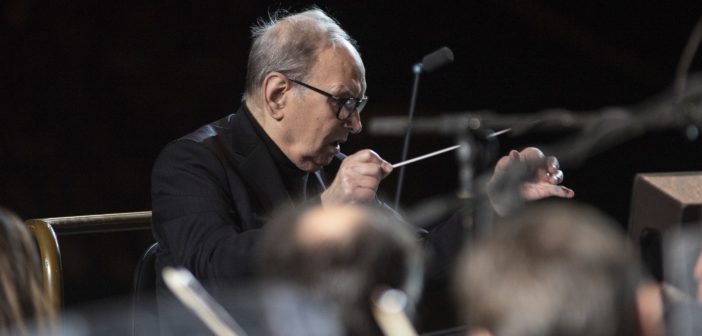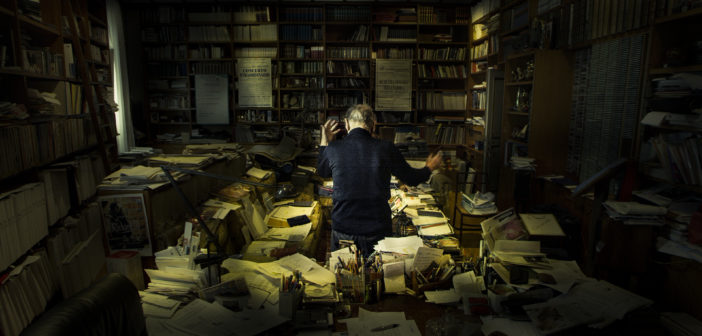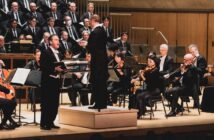This page is also available in / Cette page est également disponible en:
Français (French)
How the West Was Scored. Giuseppe Tornatore’s documentary Ennio celebrates the late, great composer of some of the most innovative movie soundtracks of the last 60 years.
At more than 150 minutes, Giuseppe Tornatore’s documentary about Ennio Morricone has the epic sweep and length of some of those classic films he scored – The Good the Bad and the Ugly, 1900, Once Upon a Time in America, The Mission, etc. And, appropriately enough, given Morricone’s gift for defying expectations, it’s bookended with quirky surprises in both the opening and closing scenes of his life.
During his formative years (Morricone was born in Rome in 1928), his father disapproved of his dreamy ambitions and pushed him towards something more practical. So far, so standard for a great artist’s origins story. Except that Morricone wanted to be a doctor and his musician father insisted he instead take up trumpet-playing to provide for the family.
Jump forward eight decades to when Morricone composed his final original score, for Tarantino’s The Hateful Eight. Tarantino had expected a feast of classic Spaghetti Western music from the maestro. What he got was a Stravinsky-inflected symphony of stalking menace, for which Morricone won his second Oscar (the first being a Lifetime Achievement award in 2007).
As this exhaustive and thoroughly involving documentary shows, Tarantino wasn’t the first director to approach Morricone with a prescriptive request list, only to get just what the film needed instead. The Taviani Brothers, for instance, asked for a percussion-only piece to accompany the revolutionary climax of their 1974 Allonsanfàn; Morricone delivered the magnificently melodic Rabbia e tarantella (which Tarantino re-purposed for Inglourious Basterds). And in one of the documentary’s many amusing moments, Oliver Stone got on Morricone’s frosty side when he showed him a Tom and Jerry cartoon in an attempt to inspire him for the score of U-Turn (1997). Stone chuckles as he recalls Morricone balefully retorting “You want me to write cartoon music?”
Tornatore, whose Cinema Paradiso and The Legend of 1900 were scored by Morricone, fills his documentary with a wealth of film clips and celebrity talking heads, but gives Morricone himself most of the screen time, filming him in his home not long before he died, at age 91, in 2020.
Morricone’s reminiscences are always revealing, and often moving. He wells up several times, including when he recalls the humiliation of his teenage years trumpeting for his supper to German, and later American troops. Sometimes his silences are just as eloquent, which, again, is entirely a propos of the Morricone style, which often relies on a tantalising tension before giving way to full sensory overload. Listen, for example, to the protractedly sustained introductory note of Deborah’s Theme in Once Upon a Time in America. Or the gentle clarinet building towards the rousing revolutionary anthem of Bertolucci’s 1900.

Photo: Piano B Produzioni
Morricone’s fan base of film buffs and soundtrack aficionados are also made to wait. It’s a good forty minutes before the documentary turns to Morricone’s first major score, the bells, whistles, cracks and grunts of A Fistful of Dollars.
But what comes before his career in movies is no less absorbing. It’s fascinating to see and hear how Morricone’s distinctive style evolved, from his jobbing years of providing arrangements to pop songs for RCA, to catching a performance in Italy by John Cage, complete with the sounds of smashing objects and a food mixer. This latter experience seems to have been the spark that inspired Morricone to include all manner of “found” sounds in his compositions (the coyote howl in The Good the Bad and the Ugly, or the astonishing symphony of creaking wood, buzzing fly and dripping water in the opening scene of Once Upon a Time in the West).
Central to Morricone’s story, and captured in the documentary with the intensity of a Greek tragedy, is his struggle against the perception that film music is somehow a prostitution of the classical composer’s art, a prejudice instilled in him by his beloved mentor and teacher Goffredo Petrassi.
Hundreds of films and countless accolades later, Morricone clearly found peace with the art form that came to define him. Indeed, it was transformed into an art form largely as a result of Morricone’s epic achievements.
In theatres accross the province from Dec. 9
Showtime available online on December 6
Theatres:
Montreal: Cinéma du Parc (English subtitles), Cinéma Beaubien (French subtitles) and Cinéma du Musée (French subtitles)
Québec : Cinéma Le Clap et Cinéma Cartier
Sherbrooke : La Maison du Cinéma
Trois-Rivières : Cinéma Tapis Rouge
Saint-Adèle : Cinéma Pine
Pointe-aux-Trembles : Station Vu
Saint-Jérôme : Cinéma Carrefour du Nord
Saint-Eustache : Cinéma St-EustacheFor ticket prices : https://cinemaduparc.com/en/prices-and-cards
This page is also available in / Cette page est également disponible en:
Français (French)















2 Comments
Pingback: Assessment | Giuseppe Tornatore’s Ennio Celebrates Movie Composer Morricone - Up To Date Hip Hop
Pingback: Review | Giuseppe Tornatore’s Ennio Celebrates Film Composer Morricone – Arts of sounds